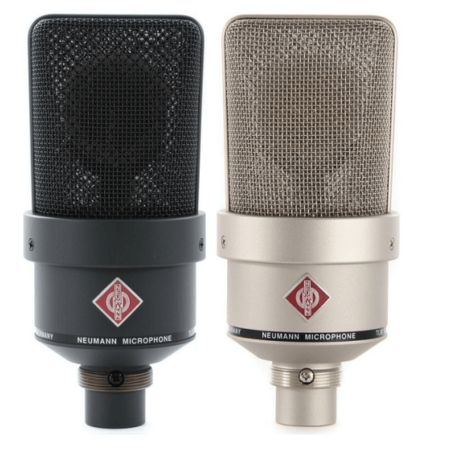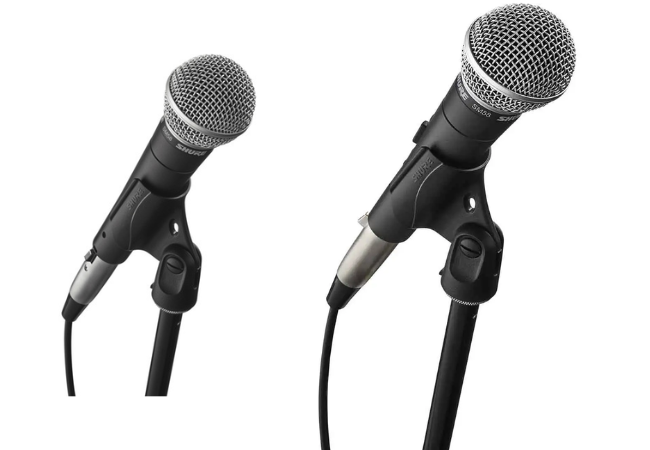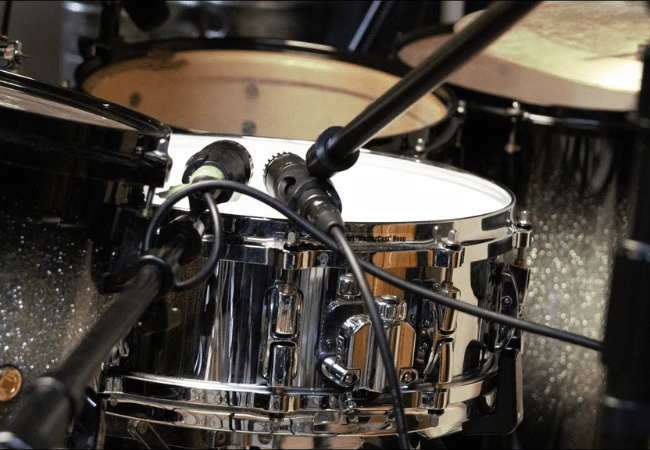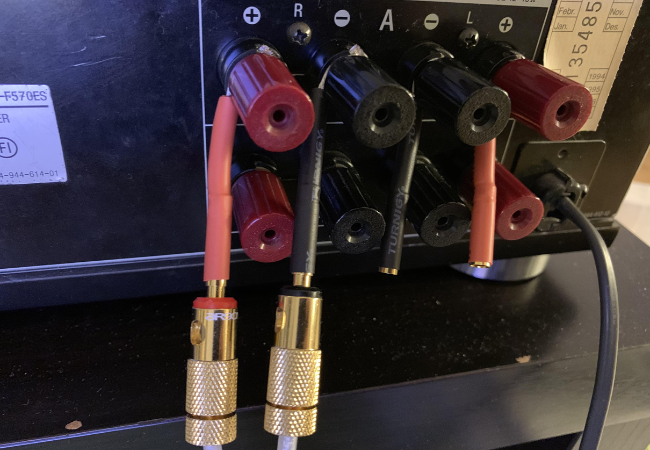When it comes to recording high-quality sound, especially in professional studio settings, the choice of microphone can make all the difference. Two heavyweights in the industry that are often compared are the TLM103 and the U87.
Both of these microphones have carved a niche for themselves, revered by sound engineers and musicians alike for their unique attributes. But when it comes down to picking one, you might find yourself entangled in a series of questions.
Which one is better suited for your guitar recordings? How do the frequency responses of these microphones differ? What impact does the transformer in U87 have on its sound output?
Cost is another significant factor to consider. Both of these microphones are a considerable investment, often forming a vital part of your gear. While the TLM103 is known for its affordability relative to its performance, the U87 tends to lean on the pricier side. It’s essential to assess whether the price difference between the two is justified by the capabilities they offer.
The frequency response of a microphone plays an enormous role in how it captures sound. Whether you are recording vocals or guitar, you would want a microphone that complements the frequency range of the instrument or voice. Both the TLM103 and U87 excel in this department, but their frequency responses are tailored for different needs. While the TLM103 offers a wide frequency range making it versatile, the U87 comes with multiple pattern selections, providing more options but also adding complexity to your gear setup.
The role of transformers in microphones is often overlooked but is crucial for sound quality. The U87, for example, comes with its own transformer, which colors the sound in a specific way that many find appealing. On the other hand, the TLM103 has a transformerless design, offering a more transparent sound.
As we dig deeper into comparing the TLM103 and U87, we will explore each bit of these variables in detail, from their cost and frequency response to how each microphone fits into your existing gear setup.
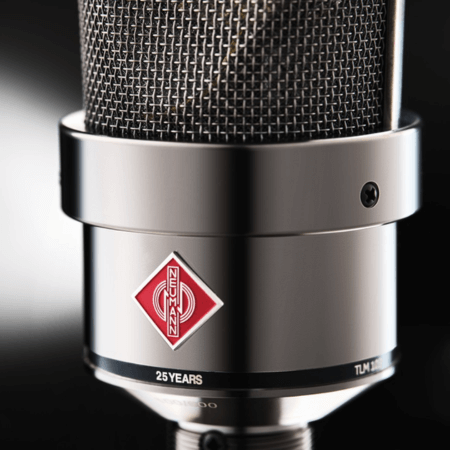
Tlm103 Vs U87
The world of studio microphones can be overwhelming, given the multitude of options available. Yet, among the plethora, two names often stand out — Neumann’s TLM 103 and U87 Ai.
While both are products of the same esteemed company, they are distinct in their features, applications, and of course, pricing. This comprehensive comparison aims to explore these two microphones in depth, helping you make an informed decision.
The Legacy and Reputation
TLM 103
The TLM 103 is often seen as an entry-level professional microphone that provides an affordable option for those seeking Neumann quality.
It features a large-diaphragm cardioid condenser design, which makes it an excellent choice for vocals and a variety of instruments.
With a self-noise of just 7 dB-A and a max SPL of 138 dB, the TLM 103 offers a high dynamic range, suitable for both quiet and loud sound sources.
U 87 Ai
On the other hand, the U 87 Ai stands as a modern incarnation of the classic U 87 introduced in 1967. With its multiple polar patterns—cardioid, omnidirectional, and figure-8—it offers incredible versatility for any recording setup.
Its sensitivity of 127 dB and switchable high-pass filter and 10dB pre-attenuation pad make it a go-to option for almost any sound source, from vocals to orchestras.
Design and Build Quality
TLM 103
The TLM 103 features a sleek, unassuming design. It doesn’t have any onboard switches for polar patterns, high-pass filters, or pads.

This simplified design makes it easier to use but limits its versatility compared to its counterpart.
U 87 Ai
The U 87 Ai is meticulously built, offering a rugged but classy aesthetic with its nickel finish. The mic features onboard switches for selecting polar patterns, engaging a high-pass filter, and activating a pre-attenuation pad. The build quality is outstanding, reflecting the premium nature of the microphone.
Technical Specifications
TLM 103
The TLM 103 operates with a cardioid pattern, as opposed to the multi-pattern capabilities of the U87 Ai. With an incredibly low self-noise level of just 7 dB-A, the microphone is ideal for capturing quieter, more nuanced performances.
However, it lacks some of the additional features like multiple polar patterns and attenuation pads that make the U87 Ai so versatile.
- Polar Pattern: Cardioid
- Sensitivity: Up to 138 dB
- Self-Noise: 7 dB-A
- Connectivity: XLR
U 87 Ai
From its connectivity technology to its multipattern polar capabilities, the U87 Ai is versatile. With an audio sensitivity of 127 dB and an impedance of 200 Ohms, this mic is designed for professionals who require the utmost quality.
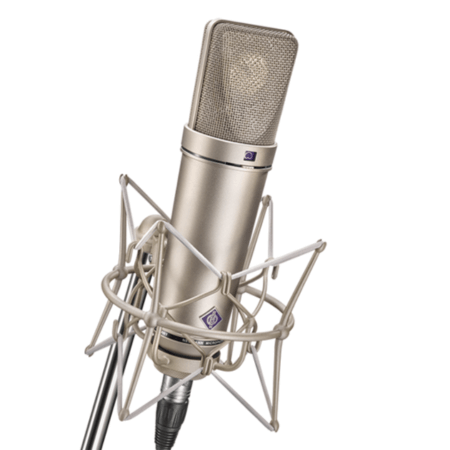
The microphone also includes a switchable 10dB pre-attenuation pad and a low-frequency cutoff, features that add to its flexibility and adaptability in a studio setting.
- Polar Pattern: Multipattern (Cardioid, Omnidirectional, Figure-8)
- Sensitivity: 127 dB
- Weight: 500 grams
- Impedance: 200 Ohm
- Connectivity: XLR
Versatility
TLM 103
The TLM 103 shines primarily as a vocal microphone. However, its large-diaphragm cardioid pattern is also quite useful for single-instrument recording.
Given its sensitivity and low self-noise, it performs admirably in capturing acoustic instruments like guitars and pianos.
While the TLM 103 may lack the range of polar patterns that the U87 Ai offers, it still holds its own in numerous recording scenarios.
Its cardioid pattern makes it excellent for vocals and single-instrument recording. However, its lower versatility can be a limiting factor when compared to its pricier counterpart.
U 87 Ai
The U 87 Ai is almost like a Swiss Army knife in the microphone world. Its switchable polar patterns make it ideal for recording anything from solo vocals to full orchestras.
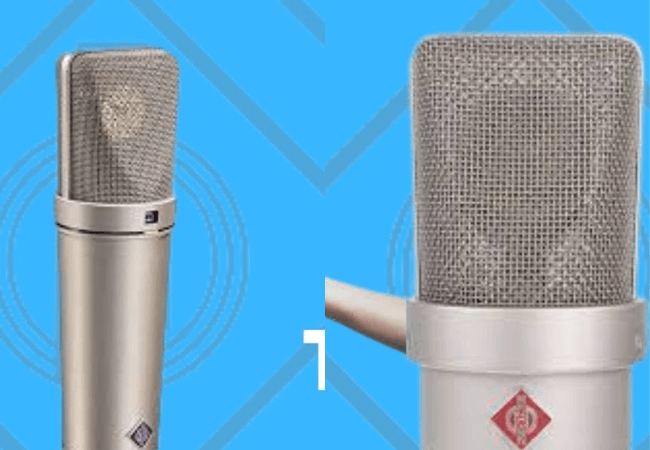
You could effectively use it to capture room ambiance or isolate specific instruments in a multi-microphone setup.
This microphone is a chameleon in the recording studio. Its three selectable polar patterns – cardioid, omnidirectional, and figure-8 – make it adaptable for a wide variety of recording setups.
Whether you’re recording a single vocalist, a guitar cab, or a full orchestra, the U87 Ai’s array of features makes it a one-size-fits-all solution.
Sound Quality
TLM 103
The sound of the TLM 103 is often described as clean and neutral. It offers a balanced frequency response that captures vocals and instruments in their most natural form.
Its high sensitivity allows it to record delicate nuances of the human voice or musical instruments.
The high-frequency response adds a shimmer to vocals and instruments alike, though it might lack the “character” that many seek in the U87 Ai.
Nonetheless, it captures audio with incredible fidelity, offering a clean slate for post-production.
U 87 Ai
The U 87 Ai provides a touch of sonic coloration that many find pleasing. With its gently boosted presence, vocals tend to sit well in a mix without much post-production. When recording instruments, the U 87 Ai captures a robust, full-bodied sound that is incredibly satisfying.
With a ruler-flat midrange and gentle presence boost, the U87 Ai shines when you need vocals or instruments to stand out in a mix.
The sound quality is often described as “warm,” “full,” and “natural,” offering an authentic representation of the source material. For many, it’s the definitive sound of countless iconic recordings.
Price Comparison
The price can be a significant deciding factor for many potential buyers. The TLM 103 generally retails for around $1,300, making it a more budget-friendly option.
On the other hand, the U 87 Ai often costs between $3,295 to $3,695 depending on the retailer, making it a more significant investment.
For professionals for whom budget is not a constraint, the U87 Ai offers comprehensive features and a tried-and-true reputation.
However, if you’re looking for Neumann quality without the hefty price tag, the TLM 103 is a worthy contender.
User Reviews
In the professional audio community, the sentiment is clear: while you can get close to U87 Ai quality with a clone or even a TLM 103, there’s something special about the original.
Many say that you “get what you pay for,” and with the U87 Ai, what you get is a piece of studio history, a tool trusted by professionals, and a sound that’s hard to replicate.
TLM 103
Most users rave about the TLM 103’s excellent performance at its price point. It’s often recommended for those who are building their first professional studio.
U 87 Ai
There seems to be a consensus among professionals that the U 87 Ai is well worth the investment. It’s described as a microphone that captures unparalleled detail and provides the kind of sonic quality that can make a significant difference in the end product.
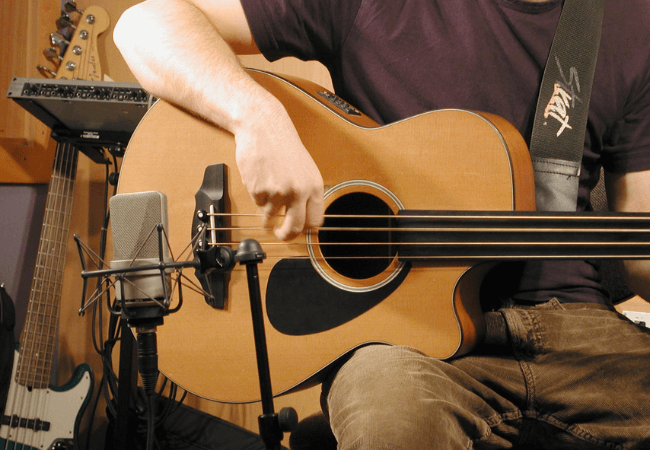
Final Thoughts
Choosing between the TLM 103 and the U 87 Ai ultimately boils down to your specific needs, budget, and what you prioritize more—versatility or simplicity.
The TLM 103 offers a straightforward, high-quality recording experience at a relatively more affordable price. If you primarily record vocals or single instruments and are on a budget, the TLM 103 is an excellent choice.
The U 87 Ai, on the other hand, is a more versatile and feature-rich microphone that can handle just about any recording situation. If you need a mic that can do it all and are willing to invest in it, the U 87 Ai stands as one of the best options available.
Both microphones are stellar performers, offering Neumann’s trusted quality and craftsmanship. The decision ultimately rests in your hands, based on your recording needs and budget constraints.
Frequently Asked Questions
Is the U87 better than the TLM 103?
The term “better” can be subjective when discussing microphones like the Neumann U87 Ai and the TLM 103, as the best choice often depends on the specific needs and constraints of the user. However, the U87 Ai is generally considered a more versatile and robust microphone due to its multiple polar patterns and additional features like a switchable pre-attenuation pad and low-frequency cutoff. Its sound character has been described as warmer and fuller, and it’s a microphone that has become a staple in professional studios around the world. The U87 Ai also has a long history of use in various applications, from music production to broadcasting, which gives it an edge in terms of proven reliability and performance. If budget is not a concern and you’re looking for a microphone with rich features and versatile applications, the U87 Ai is often considered superior.
What is the difference between U87 and TLM 103 mic?
The primary differences between the U87 Ai and TLM 103 microphones lie in their features, versatility, and price: Polar Patterns: The U87 Ai has multiple polar patterns (cardioid, omnidirectional, and figure-8), making it extremely versatile for different recording setups. The TLM 103 offers only a cardioid pattern. Additional Features: The U87 Ai comes with a switchable 10dB pre-attenuation pad and a low-frequency cutoff, which add to its adaptability in various studio settings. The TLM 103 lacks these additional features. Sound Character: While both mics deliver excellent sound quality, the U87 Ai is known for its warmer, fuller sound, whereas the TLM 103 is often described as clean and transparent. Price: The U87 Ai is considerably more expensive, typically priced between $3,295 to $3,695, whereas the TLM 103 usually ranges from $1,100 to $1,300.
Is TLM 103 good for vocals?
Yes, the TLM 103 is excellent for recording vocals. It’s known for its clean, transparent sound and high-frequency response, which adds a sense of brightness and clarity to vocal tracks. With its cardioid pattern, the TLM 103 focuses on the sound coming from directly in front of it, effectively reducing background noise and making it ideal for vocal recordings. The microphone also boasts a very low self-noise level, which is beneficial for capturing nuanced vocal performances.
What mic sounds like a U87?
If you’re seeking a microphone that closely emulates the U87 Ai’s sound characteristics but at a more affordable price point, several options are available. Some of these are: Warm Audio WA-87: Often cited as a budget-friendly alternative, this microphone aims to replicate the vintage character of the U87 Ai at a fraction of the cost. Rode NT2-A: This microphone offers multiple polar patterns and a sound that’s often compared favorably to the U87 Ai, though it leans towards a brighter tone. Audio-Technica AT4050: While not a clone, the AT4050 offers a level of versatility and sound quality that many find comparable to the U87 Ai.
